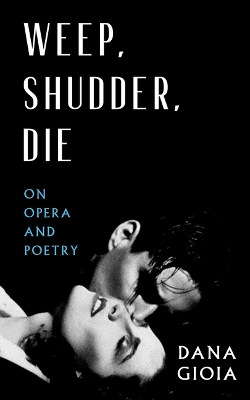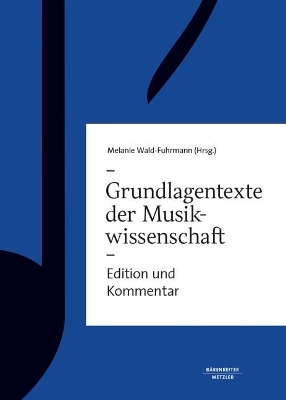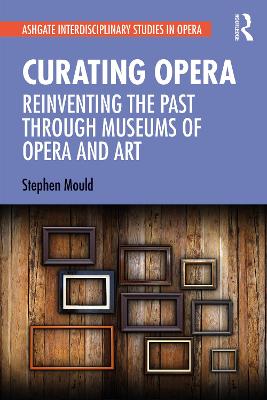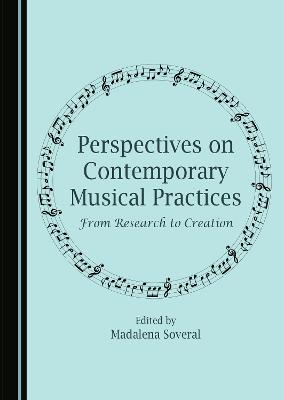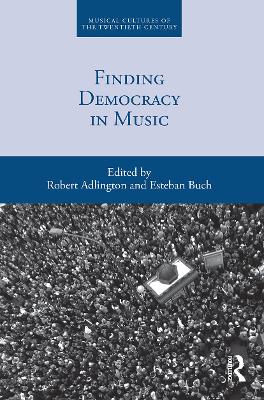Digital Scenography in Opera in the Twenty-First Century
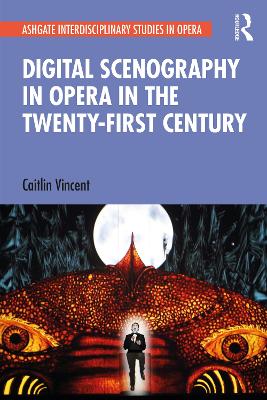 portes grátis
portes grátis
Digital Scenography in Opera in the Twenty-First Century
Vincent, Caitlin
Taylor & Francis Ltd
09/2021
198
Dura
Inglês
9780367553920
15 a 20 dias
548
Descrição não disponível.
Introduction Chapter One - Digitally-enhanced opera in the twenty-first century and the modes of synthesis Chapter Two - Digitally-enhanced opera in the twenty-first century and the variants of causal interplay Chapter Three - The lineage of digital scenography: Baroque origins to the twentieth century Chapter Four - The lineage of digital scenography: multimedia opera in the twentieth century Chapter Five - The projection designer and evolving creative hierarchies in opera Chapter Six - Digital scenography and evolving production design processes in opera Conclusion Bibliography
Introduction to digital scenography in opera
What is digital scenography?
Why opera?
Research methods
The modes of synthesis
Examples of practice
Interviews
Chapter outline
References
Chapter One - A new classification system for digital scenography: the modes of synthesis
Articulating the modes of synthesis: non-synthesis, partial-synthesis, and full- synthesis
Non-synthesis-San Francisco Opera, The Magic Flute (2012)
Partial-synthesis-Theatre Royal de la Monnaie, The Magic Flute (2005)
Full-synthesis-Komische Oper Berlin, The Magic Flute (2012)
A comparison of critical responses to the three productions
Conclusion
References
Chapter Two - The variants of causal interplay
Agency: the screen as 'performer'
Dutch National Opera, The Magic Flute (2012)-partial-synthesis
Victorian Opera, Four Saints in Three Acts (2016)-partial-synthesis
Augmentation: extension and transformation through digitalisation
The Royal Opera, Covent Garden, Don Giovanni (2014)-partial-synthesis
Victorian Opera, The Flying Dutchman (2015)-partial-synthesis
Full-synthesis extremes of agency and augmentation
Opera de Lyon, L'Enfant et les Sortileges (2016)-full-synthesis
Autonomy: faux-interactivity versus functional interactivity
The Metropolitan Opera, Das Rheingold (2010)-partial-synthesis
Implications for performers and audiences
References
Chapter Three - The lineage of digital scenography in opera: Baroque origins to the twentieth century
The origins of the Baroque opera paradigm
The Baroque paradigm and the interplay between performer, stage setting, and spectator
New perspectives: the scenic reforms of Ferdinando Galli-Bibiena (1657-1743)
The scenographic transition to 'grand opera'
The 'mystic chasm': Richard Wagner (1813-1883) and the Bayreuth Festspielhaus
Adolphe Appia (1862-1928) and dynamic light
Looking towards the twentieth century
References
Chapter Four - The lineage of digital scenography in opera: multimedia developments in the twentieth century
Avant-garde origins
Edward Gordon Craig (1872-1966) and Enrico Prampolini (1894-1956): 'a thousand scenes in one' and 'luminous forms'
Josef Svoboda (1920-2002) and the dynamic setting of the Laterna Magika
The Tales of Hoffmann (1962)
Guenther Schneider-Siemssen (1926-2015) and the holograms of the Salzburg Marionette Theatre
The Tales of Hoffmann (1985)
Looking towards the twenty-first century
References
Chapter Five - The projection designer and evolving creative hierarchies
Industry recognition and acknowledgement
The traditional theatrical hierarchy: director as ultimate authority
The lateral hierarchy: collective directorate
Hierarchical variation: projection designers as the directorial authority
The evolving role of the projection designer
References
Chapter Six - Digital scenography and evolving production design processes
A benchmark of organisational and funding models
The twentieth-century standard for production design
Washington National Opera's Das Rheingold (2016)-non-synthesis
Theatre Royal de la Monnaie's The Magic Flute (2005)-partial-synthesis
Dutch National Opera's The Magic Flute (2012)-partial-synthesis
Santa Fe Opera's The (R)evolution of Steve Jobs (2017)-non-synthesis
Komische Oper Berlin's The Magic Flute (2012)-full-synthesis
Commonalities across the five production design processes
Production design processes and the modes of synthesis
References
Conclusion - The future evolution of digital scenography
References
Appendix 1
Appendix 2
Appendix 3
Introduction to digital scenography in opera
What is digital scenography?
Why opera?
Research methods
The modes of synthesis
Examples of practice
Interviews
Chapter outline
References
Chapter One - A new classification system for digital scenography: the modes of synthesis
Articulating the modes of synthesis: non-synthesis, partial-synthesis, and full- synthesis
Non-synthesis-San Francisco Opera, The Magic Flute (2012)
Partial-synthesis-Theatre Royal de la Monnaie, The Magic Flute (2005)
Full-synthesis-Komische Oper Berlin, The Magic Flute (2012)
A comparison of critical responses to the three productions
Conclusion
References
Chapter Two - The variants of causal interplay
Agency: the screen as 'performer'
Dutch National Opera, The Magic Flute (2012)-partial-synthesis
Victorian Opera, Four Saints in Three Acts (2016)-partial-synthesis
Augmentation: extension and transformation through digitalisation
The Royal Opera, Covent Garden, Don Giovanni (2014)-partial-synthesis
Victorian Opera, The Flying Dutchman (2015)-partial-synthesis
Full-synthesis extremes of agency and augmentation
Opera de Lyon, L'Enfant et les Sortileges (2016)-full-synthesis
Autonomy: faux-interactivity versus functional interactivity
The Metropolitan Opera, Das Rheingold (2010)-partial-synthesis
Implications for performers and audiences
References
Chapter Three - The lineage of digital scenography in opera: Baroque origins to the twentieth century
The origins of the Baroque opera paradigm
The Baroque paradigm and the interplay between performer, stage setting, and spectator
New perspectives: the scenic reforms of Ferdinando Galli-Bibiena (1657-1743)
The scenographic transition to 'grand opera'
The 'mystic chasm': Richard Wagner (1813-1883) and the Bayreuth Festspielhaus
Adolphe Appia (1862-1928) and dynamic light
Looking towards the twentieth century
References
Chapter Four - The lineage of digital scenography in opera: multimedia developments in the twentieth century
Avant-garde origins
Edward Gordon Craig (1872-1966) and Enrico Prampolini (1894-1956): 'a thousand scenes in one' and 'luminous forms'
Josef Svoboda (1920-2002) and the dynamic setting of the Laterna Magika
The Tales of Hoffmann (1962)
Guenther Schneider-Siemssen (1926-2015) and the holograms of the Salzburg Marionette Theatre
The Tales of Hoffmann (1985)
Looking towards the twenty-first century
References
Chapter Five - The projection designer and evolving creative hierarchies
Industry recognition and acknowledgement
The traditional theatrical hierarchy: director as ultimate authority
The lateral hierarchy: collective directorate
Hierarchical variation: projection designers as the directorial authority
The evolving role of the projection designer
References
Chapter Six - Digital scenography and evolving production design processes
A benchmark of organisational and funding models
The twentieth-century standard for production design
Washington National Opera's Das Rheingold (2016)-non-synthesis
Theatre Royal de la Monnaie's The Magic Flute (2005)-partial-synthesis
Dutch National Opera's The Magic Flute (2012)-partial-synthesis
Santa Fe Opera's The (R)evolution of Steve Jobs (2017)-non-synthesis
Komische Oper Berlin's The Magic Flute (2012)-full-synthesis
Commonalities across the five production design processes
Production design processes and the modes of synthesis
References
Conclusion - The future evolution of digital scenography
References
Appendix 1
Appendix 2
Appendix 3
Este título pertence ao(s) assunto(s) indicados(s). Para ver outros títulos clique no assunto desejado.
Digital Scenography;Scenographic Design;Magic Flute;Digital Elements;Opera Production;Creative Hierarchy;Production Design Process;Bayreuth Festspielhaus;Ferdinando Galli Bibiena;Komische Oper Berlin;Flying Dutchman;Opera Companies;Live Performers;VR Experience;Creative Practitioners;Laterna Magika;Enrico Prampolini;Technical Rehearsals;Royal De La Monnaie;Visual Correlation;Staging Rehearsals;Santa Fe Opera;Die Harmonie Der Welt;Digital Avatars;Kinetic Stage
Introduction Chapter One - Digitally-enhanced opera in the twenty-first century and the modes of synthesis Chapter Two - Digitally-enhanced opera in the twenty-first century and the variants of causal interplay Chapter Three - The lineage of digital scenography: Baroque origins to the twentieth century Chapter Four - The lineage of digital scenography: multimedia opera in the twentieth century Chapter Five - The projection designer and evolving creative hierarchies in opera Chapter Six - Digital scenography and evolving production design processes in opera Conclusion Bibliography
Introduction to digital scenography in opera
What is digital scenography?
Why opera?
Research methods
The modes of synthesis
Examples of practice
Interviews
Chapter outline
References
Chapter One - A new classification system for digital scenography: the modes of synthesis
Articulating the modes of synthesis: non-synthesis, partial-synthesis, and full- synthesis
Non-synthesis-San Francisco Opera, The Magic Flute (2012)
Partial-synthesis-Theatre Royal de la Monnaie, The Magic Flute (2005)
Full-synthesis-Komische Oper Berlin, The Magic Flute (2012)
A comparison of critical responses to the three productions
Conclusion
References
Chapter Two - The variants of causal interplay
Agency: the screen as 'performer'
Dutch National Opera, The Magic Flute (2012)-partial-synthesis
Victorian Opera, Four Saints in Three Acts (2016)-partial-synthesis
Augmentation: extension and transformation through digitalisation
The Royal Opera, Covent Garden, Don Giovanni (2014)-partial-synthesis
Victorian Opera, The Flying Dutchman (2015)-partial-synthesis
Full-synthesis extremes of agency and augmentation
Opera de Lyon, L'Enfant et les Sortileges (2016)-full-synthesis
Autonomy: faux-interactivity versus functional interactivity
The Metropolitan Opera, Das Rheingold (2010)-partial-synthesis
Implications for performers and audiences
References
Chapter Three - The lineage of digital scenography in opera: Baroque origins to the twentieth century
The origins of the Baroque opera paradigm
The Baroque paradigm and the interplay between performer, stage setting, and spectator
New perspectives: the scenic reforms of Ferdinando Galli-Bibiena (1657-1743)
The scenographic transition to 'grand opera'
The 'mystic chasm': Richard Wagner (1813-1883) and the Bayreuth Festspielhaus
Adolphe Appia (1862-1928) and dynamic light
Looking towards the twentieth century
References
Chapter Four - The lineage of digital scenography in opera: multimedia developments in the twentieth century
Avant-garde origins
Edward Gordon Craig (1872-1966) and Enrico Prampolini (1894-1956): 'a thousand scenes in one' and 'luminous forms'
Josef Svoboda (1920-2002) and the dynamic setting of the Laterna Magika
The Tales of Hoffmann (1962)
Guenther Schneider-Siemssen (1926-2015) and the holograms of the Salzburg Marionette Theatre
The Tales of Hoffmann (1985)
Looking towards the twenty-first century
References
Chapter Five - The projection designer and evolving creative hierarchies
Industry recognition and acknowledgement
The traditional theatrical hierarchy: director as ultimate authority
The lateral hierarchy: collective directorate
Hierarchical variation: projection designers as the directorial authority
The evolving role of the projection designer
References
Chapter Six - Digital scenography and evolving production design processes
A benchmark of organisational and funding models
The twentieth-century standard for production design
Washington National Opera's Das Rheingold (2016)-non-synthesis
Theatre Royal de la Monnaie's The Magic Flute (2005)-partial-synthesis
Dutch National Opera's The Magic Flute (2012)-partial-synthesis
Santa Fe Opera's The (R)evolution of Steve Jobs (2017)-non-synthesis
Komische Oper Berlin's The Magic Flute (2012)-full-synthesis
Commonalities across the five production design processes
Production design processes and the modes of synthesis
References
Conclusion - The future evolution of digital scenography
References
Appendix 1
Appendix 2
Appendix 3
Introduction to digital scenography in opera
What is digital scenography?
Why opera?
Research methods
The modes of synthesis
Examples of practice
Interviews
Chapter outline
References
Chapter One - A new classification system for digital scenography: the modes of synthesis
Articulating the modes of synthesis: non-synthesis, partial-synthesis, and full- synthesis
Non-synthesis-San Francisco Opera, The Magic Flute (2012)
Partial-synthesis-Theatre Royal de la Monnaie, The Magic Flute (2005)
Full-synthesis-Komische Oper Berlin, The Magic Flute (2012)
A comparison of critical responses to the three productions
Conclusion
References
Chapter Two - The variants of causal interplay
Agency: the screen as 'performer'
Dutch National Opera, The Magic Flute (2012)-partial-synthesis
Victorian Opera, Four Saints in Three Acts (2016)-partial-synthesis
Augmentation: extension and transformation through digitalisation
The Royal Opera, Covent Garden, Don Giovanni (2014)-partial-synthesis
Victorian Opera, The Flying Dutchman (2015)-partial-synthesis
Full-synthesis extremes of agency and augmentation
Opera de Lyon, L'Enfant et les Sortileges (2016)-full-synthesis
Autonomy: faux-interactivity versus functional interactivity
The Metropolitan Opera, Das Rheingold (2010)-partial-synthesis
Implications for performers and audiences
References
Chapter Three - The lineage of digital scenography in opera: Baroque origins to the twentieth century
The origins of the Baroque opera paradigm
The Baroque paradigm and the interplay between performer, stage setting, and spectator
New perspectives: the scenic reforms of Ferdinando Galli-Bibiena (1657-1743)
The scenographic transition to 'grand opera'
The 'mystic chasm': Richard Wagner (1813-1883) and the Bayreuth Festspielhaus
Adolphe Appia (1862-1928) and dynamic light
Looking towards the twentieth century
References
Chapter Four - The lineage of digital scenography in opera: multimedia developments in the twentieth century
Avant-garde origins
Edward Gordon Craig (1872-1966) and Enrico Prampolini (1894-1956): 'a thousand scenes in one' and 'luminous forms'
Josef Svoboda (1920-2002) and the dynamic setting of the Laterna Magika
The Tales of Hoffmann (1962)
Guenther Schneider-Siemssen (1926-2015) and the holograms of the Salzburg Marionette Theatre
The Tales of Hoffmann (1985)
Looking towards the twenty-first century
References
Chapter Five - The projection designer and evolving creative hierarchies
Industry recognition and acknowledgement
The traditional theatrical hierarchy: director as ultimate authority
The lateral hierarchy: collective directorate
Hierarchical variation: projection designers as the directorial authority
The evolving role of the projection designer
References
Chapter Six - Digital scenography and evolving production design processes
A benchmark of organisational and funding models
The twentieth-century standard for production design
Washington National Opera's Das Rheingold (2016)-non-synthesis
Theatre Royal de la Monnaie's The Magic Flute (2005)-partial-synthesis
Dutch National Opera's The Magic Flute (2012)-partial-synthesis
Santa Fe Opera's The (R)evolution of Steve Jobs (2017)-non-synthesis
Komische Oper Berlin's The Magic Flute (2012)-full-synthesis
Commonalities across the five production design processes
Production design processes and the modes of synthesis
References
Conclusion - The future evolution of digital scenography
References
Appendix 1
Appendix 2
Appendix 3
Este título pertence ao(s) assunto(s) indicados(s). Para ver outros títulos clique no assunto desejado.
Digital Scenography;Scenographic Design;Magic Flute;Digital Elements;Opera Production;Creative Hierarchy;Production Design Process;Bayreuth Festspielhaus;Ferdinando Galli Bibiena;Komische Oper Berlin;Flying Dutchman;Opera Companies;Live Performers;VR Experience;Creative Practitioners;Laterna Magika;Enrico Prampolini;Technical Rehearsals;Royal De La Monnaie;Visual Correlation;Staging Rehearsals;Santa Fe Opera;Die Harmonie Der Welt;Digital Avatars;Kinetic Stage


